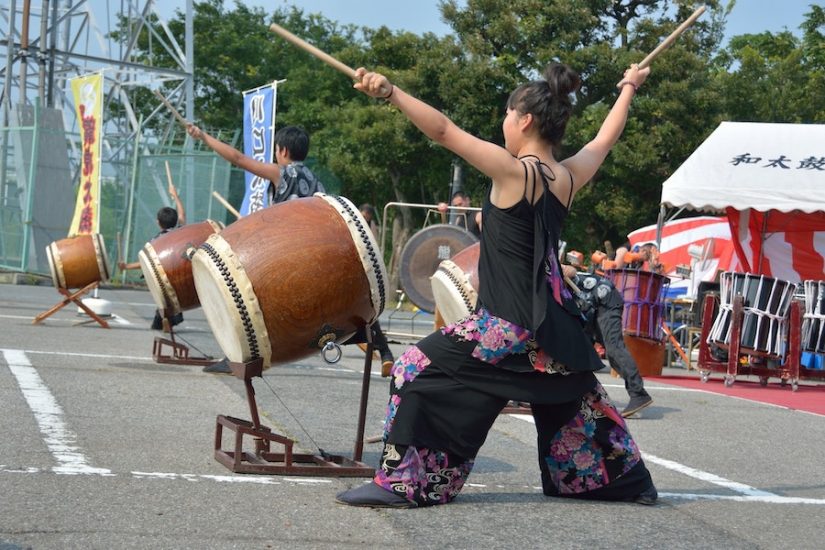Hobbies are important. They help to take your mind off the more stressful aspects of life (like work) and they can also give life a rich sense of purpose and achievement. If you live in Japan then finding an interesting hobby can also be a way to immerse yourself in the culture, make connections with like-minded Japanese people, and may also provide a natural setting for practicing your Japanese language skills. In this article we will list some traditional Japanese arts and hobbies that you might like to try during your time in Japan and tips on where to study them.
Ikebana
Ikebana is the Japanese art of flower arrangement. The word can be written as 生け花 or 活け花 but both ways suggest a meaning of “bringing flowers to life”. Sometimes it is also referred to as kadō (華道, literally “way of flowers”). Ikebana is believed to have a spiritual origin over 1200 years ago when flowers were offered at temple altars. Now it has developed into a highly disciplined art that celebrates the whole plant, not just the flowers, but twigs, leaves and stems too. The practitioner is encouraged to find the simplest arrangement that brings out the inherent beauty of the materials. Ikebana classes are easy to find throughout Japan, and three of the most famous schools are listed below.
- Ikenobo: https://www.ikenobo.jp/english/
- Ohara: https://www.ohararyu.or.jp/english/index.html
- Sogetsu: http://www.sogetsu.or.jp/e/study/experience.html/
Japanese Calligraphy
Japanese calligraphy is called shodō (書道 — “way of writing”) and along with kanji characters it originated in China before being introduced to Japan in the 7th century. Today it is a highly respected art form in Japan that requires a focused mind, light flowing motions, and confidence in your intention — for once you put the pen to paper, you only get one chance to get it right! Although it may take years of practice to attain such levels of artistic skill, a beginners class in Japanese calligraphy is great way to practice writing Japanese and will certainly help you to memorize those tricky kanji characters! This is a very popular pastime in Japan and a quick internet search with your location should bring up several classes in your area. Three regional shodō classes are listed below:
- Tokyo: https://tokyocalligraphyclass.com/
- Nagoya: https://hitonomori.jp/shodo.html
- Osaka: http://www.baikei.org/courses_en.html
Taiko Drumming
If you fancy a more physical pastime, then taiko drumming is for you! Intense, energetic, and passionate, taiko performances are a common sight at Japanese festivals and inspiring to watch. The word taiko (太鼓) simply means drum, so you may sometimes hear more specific terms such as wadaiko (和太鼓) which means “Japanese drum” or kumi-daiko (組太鼓) which means “group of drums”. This latter form of kumi-daiko ensemble drum playing was actually created in the 1950s by a jazz musician called Daihachi Oguchi, who brought new life to ancient rhythms, and made taiko drumming the popular activity it is today. Like other traditional Japanese activities, taiko playing requires deep focus, but its physicality also makes it a lot of fun. If you take this up as a hobby you will be sure to develop a deep connection with other members of your taiko group through the shared experience of the performance. And it is also a great way to build up your arm muscles! Taiko Center offers lessons in taiko drumming in Tokyo, Kyoto, Osaka, and Kobe, but wherever your location a quick internet search should bring up classes in most areas of Japan.
Tea Ceremony
The Japanese tea ceremony can be called sadō or chadō but is written as 茶道 which means “way of tea”. Simply put, it is a formal ritual in which powdered green tea (called matcha) is prepared by a host and presented to a number of guests, usually in a special room or teahouse. The formal nature of the ceremony, the special tools that are used, and the tranquility of the location provide an opportunity for deep focus and a separation from everyday concerns. The tea ceremony is also a meeting point for many other arts and aspects of Japanese culture such as the ceramics used in the ceremony, the calligraphy and flower arrangement that decorate the tea house, and the Zen principles that underlie the way of tea. Tea ceremony classes are ubiquitous in Japan and two of the most famous schools are listed below.
- Urasenke: http://www.urasenke.or.jp/texte/
- Omotesenke: http://www.omotesenke.jp/index.html








